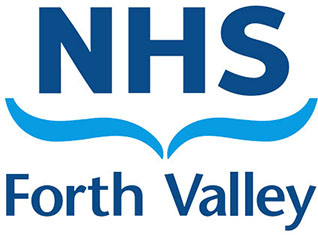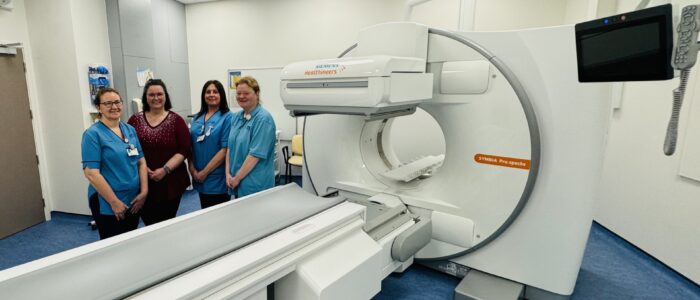Advanced Dual Scanning Technology Enhances Patient Care at Forth Valley Royal Hospital
A new state of the art system, that combines two scanning technologies to enhance diagnosis for cancer, urology and endocrine patients, has been introduced at Forth Valley Royal Hospital.
The move will increase accuracy of scans, enhancing quality and speed of diagnoses. Patients will benefit from faster access to scans with shorter appointment times and less need for repeat visits.
The SIEMENS Symbia Pro.specta is part of a planned replacement programme to update existing equipment which was originally installed when the hospital was built in 2011.
The new machine uses nuclear single-photon emission computed tomography (SPECT) technology with a gamma ray camera to scan patients who have been injected with a harmless radioisotope. This is combined with a 360-degree CT scan to create detailed imaging of structure and physiology. The patient receives the CT scan immediately after the gamma ray scan, whereas previously they would have to wait a few hours or even days for the subsequent CT scan. The quality of the images is significantly enhanced by keeping the patient in exactly the same position for both scans.
The system’s artificial intelligence superimposes the images from both scans to create a more accurate and detailed report for diagnosis. The ability to pinpoint a tumour or lesions with more detail can result in less invasive surgery and therefore better recovery.
Jennifer Gilchrist, Radiology Services Manager, NHS Forth Valley, said: “This latest innovation with SPECT technology is part of our planned programme of upgrades to enhance radiology services and comes just a few months since two other new state-of-the-art diagnostic imaging machines went live in the department.
“This is a leading-edge system that brings significant benefits for patients by enhancing the quality of images and information for optimum diagnosis while also reducing the time spent at appointments and need for extra visits. In addition, Forth Valley patients who previously had to travel to Glasgow for conditions such as neuro-endocrine tumours now have access to this specialised service locally, which makes a huge difference to them and speeds up treatment.”
The introduction of the SPECT machine follows on from the commissioning of two other state of the art scanning machines at the hospital earlier this year. An Alphenix Sky+ system, the first of its kind in Scotland is used for a range of procedures that avoid the need for invasive surgery. Its double C Arm has the unique ability to fully rotate from either side of the patient table and capture images from every angle. The machine is used to carry out a range of complex procedures and scans including inserting small metal coils into veins or arteries to cut off the blood supply to cancerous tumours and place stents which can then be expanded to help clear blockages and maintain blood flow. These minimally invasive techniques can be used to treat a wide range of patients including those with heart, renal and prostate conditions which previously would have required major surgery. It can also be used to carry out investigations of the uterus for women experiencing fertility issues and treat uterine fibroids, avoiding the need for more invasive procedures or surgery.
A new Ultimax-i machine, which has been installed in the fluoroscopy room, enables high quality images and videos to be captured using contrast dye. This technology can be used to examine patients experiencing difficulties chewing and swallowing food, which can often happen after a stroke, and assess joints to identify if a patient would benefit from a hip or knee replacement. It can also be used to help position catheters and PICC lines to administer antibiotics and chemotherapy drugs, guide needles used to inject local anaesthetic into joints and insert stents to treat patients with a range of cancers, including bowel, stomach, gallbladder and liver cancer. Both machines are used by the Cardiology Team to insert cardiac pacemakers and defibrillators into patients which enables them to be seen on a day case basis, instead of having to going to theatre.





